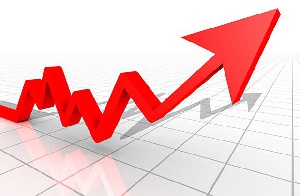 Transport recorded the highest inflation rate of 13.7 percent
Transport recorded the highest inflation rate of 13.7 percent
The growth rate of the general price level of goods and services that households acquire for the purpose of consumption in November has recorded a further dip by 0.2 percentage points to 9.3 percent, from the 9.5percent recorded in October 2018.
This is according to latest data released by the Ghana Statistical Services (GSS).
The Consumer Price Index (CPI) measures the change over time in the general price level of goods and services that households acquire for the purpose of consumption.
Addressing the media on the latest development, the acting government statistician, Baah Wadieh observed that the food index dropped by about 0.3 percentage points lower than the rate recorded in October 2018, which actually had a huge effect on the total inflation rate. Food items account for nearly half of the basket of goods used to compute the CPI.
The food and non-alcoholic beverages group recorded a year-on-year inflation rate of 8.6 percent. Six subgroups of the food and non-alcoholic beverages group recorded inflation rates higher than the group’s average rate of 8.6 percent
The non-food group recorded a year-on-year inflation rate of 9.7 percent in November 2018, compared to the 9.8 percent recorded for October 2018.
Five subgroups recorded year-on-year inflation rates higher than the group’s average rate of 9.7 percent.
Transport recorded the highest inflation rate of 13.7 percent,followed by Recreation and culture with 13.3 percent, clothing and footwear with 12.6 percent, furnishings, household equipment and routine maintenance with 11.4 percent and Miscellaneous goods and services with 10.3 percent.
Housing, water, electricity, gas and others fuels subgroup recorded the lowest inflation at 3.1 percent.
At the regional level, the year-on-year inflation rate ranged from 7.6 percent in Upper East region to 11.5 percent in Upper West region.Five regions; Upper West, Brong Ahafo, Western, Ashanti and Northern, recorded inflation rates above the national average of 9.3 percent.